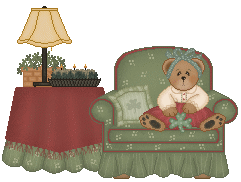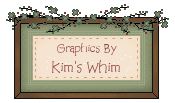
Annie's St. Patrick's Day Symbols Page

~St. Patrick's Day
is celebrated around the world on March 17th~
There are many symbols connected with St. Patrick's Day. Just some of them are the shamrock, the rainbow, the pot of gold, goblins, elves and leprechauns. Some Symbols of St. Patrick's Day:
Let's look at what the Bible says about the "rainbow": The RAINBOW is God's promise that He will never flood the world again. Genesis 9:12-17 "And God said, "This is the sign of the covenant I am making between me and you and every living creature with you, a covenant for all generations to come: I have set my rainbow in the clouds, and it will be the sign of the covenant between me and the earth. Whenever I bring clouds over the earth and the rainbow appears in the clouds, I will remember my covenant between me and you and all living creatures of every kind. Never again will the waters become a flood to destroy all life. Whenever the rainbow appears in the clouds, I will see it and remember the everlasting covenant between God and all living creatures of every kind on the earth." So God said to Noah, "This is the sign of the covenant I have established between me and all life on the earth."
"Rainbow
in the morning, travelers take warning; rainbow at night,
traveler's delight. As storms usually come from the west
in the mid-latitudes, a morning rainbow, seen in the
west, indicates humid air and the coming of stormy
weather. An evening rainbow, seen in the east, indicates
the passing of stormy weather." Sometimes
fairies reward people for doing them a favor. According
to one story, a farmer who mends a fairy oven or chair
will receive delicious food in return. Grateful fairies
also may leave money for people who have treated them
well.
Goblins, in folklore, grotesque fairies similar to gnomes; sometimes evil, sometimes playful Elf (plural elves), a supernatural being of Teutonic mythology; sometimes thought of as a mountain fay or, usually, as a small sprite; mischievous elves are thought to bring evil, especially bad dreams
And this stems from a more bona fide Irish tale that tells how Patrick used the three-leafed shamrock to explain the Trinity. He used it in his sermons to represent how the Father, the Son, and the Holy Spirit could all exist as separate elements of the same entity. His followers adopted the custom of wearing a shamrock on his feast day. ~Excerpted from Compton's Encyclopedia ~ WHAT DOES THE SHAMROCK HAVE
SHAMROCK: "You tell us that
there are three gods and yet one," the puzzled Irish
said when St. Patrick was preaching the gospel to them in
the 5th century AD. "How can that be?" The
saint bent down and plucked a shamrock. "Do you not
see," he said, "how in this wildflower three
leaves are united on one stalk, and will you not then
believe that there are indeed three persons Shamrock from Encarta: Shamrock, common name for any of several three-leafed clovers native to Ireland. The shamrock was chosen Ireland's national emblem because of the legend that St. Patrick had used it to illustrate the doctrine of the Trinity. The Irish have considered shamrocks as good-luck symbols since earliest times, and today people of many other nationalities also believe they bring good luck. Scientific classification: Shamrocks belong to the family Leguminosae. Information
from the World Book Encyclopedia on the SHAMROCK: is a type of small
herb with leaves made up of three leaflets. It is the
national symbol of Ireland. According to legend, Saint
Patrick planted shamrock in Ireland because the three
small leaflets represented the Holy Trinity. Many Irish
people wear a shamrock on St. Patrick's Day. The name
shamrock comes from an Irish word that means trefoil
(three-leafed).
You
can send a St Patrick's Day Greeting
|
Annie's
Featured Holiday Page |
Annie's
Featured Page |
Copyright
1999 - 2006 Annie's Home Page. All Rights Reserved. I thank the
Lord
for graphics artists without them these pages would not be the
same. Please visit
Annie's List of Great Graphics Spots for a list of their links.
Some images on this
page from Cindy's Heartworks ~ Original Graphics & Wildheart
Creations &
Graphic
Garden
& Kim's Whim Graphics. This site hosted by: Christian Web Host.
Silent
No Right Click Script from Dynamic Drive. For Instructions on how
to add the no
right click script visit: Annie's "How to Add
Silent No Right Click Script" Page.

For a Listing of the Rest of my Pages:
![]()